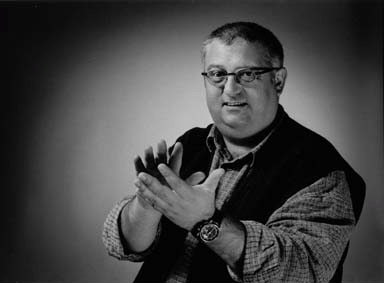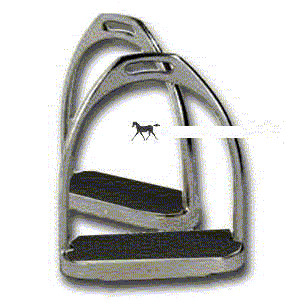



 Erhard Doubrawa (Foto: Hagen Willsch)
Erhard Doubrawa (Foto: Hagen Willsch)
|
- |
Our New Book: Erhard Doubrawa In this book the author has collected stories, which he has often told in his therapeutic work – during individual therapy sessions with clients as well as in group trainings. These stories have already often contributed to helping people open themselves again and be deeply touched by others. [Information] |
Psychotherapy, as a learnable and teachable profession, is
always in danger of being reduced to its methodical or even technical
aspects. Therefore it is impossible to overrate (over-emphasize,
exaggerate) the significance of bringing the (multilayered)
dimensions of the relationship into awareness again and again.
(Ludwig Frambach)
I also work as a supervisor with colleagues, who did their Gestalt
training in this spirit of the reduction of the work into methods and
techniques, mentioned by Ludwig Frambach. I see their struggle to
make the "correct" (the "right") intervention. It is as if they -
when working with clients - would be continuously "scanning" their
own background for possible interventions, in order to find the most
suitable, the correct intervention. Their trainers have become
introjected authorities for them.
I mean it literally, when I say that I see their distress. Because
they really are afraid that I could judge their intervention in the
supervision as a wrong intervention. By the way that is how they also
experienced the supervision during their training - as an
examination. That is the reason why some of them left feeling deeply
hurt by their trainers (teachers) when they have finished their
training. Many self doubts often remain and a feeling of low
professional self-esteem as a Gestalt therapist.
I would not deny that similar wounds happen at our Institute. But we
try to avoid them when possible. I point out again and again to my
trainees that a Gestalt therapist must go his own way, and must find
his own style. As a teacher I will support them in that process.
Laura Perls once told us that there are as many Gestalt therapy
directions (ways) as there are therapists who practice Gestalt
therapy.
Last but not least therefore as trainers we try to create a learning
climate (atmosphere) at our Institute, where our trainees learn
Gestalt therapy in other ways than just by adopting Gestalt
techniques (the mere assimilation of Gestalt techniques). Most
importantly we try to convey (transmit) the Gestalt therapeutic
attitude.
The Gestalt attitude of the therapist is characterised by the turning of his attention towards the client, and by the openness of the therapist towards his own inner perceptions and experience. Therefore we teach our trainees awareness. We do that, by firstly practicing awareness as teachers ourselves. Often we begin our group meetings with an awareness meditation from the Buddhist tradition. By doing this, we open ourselves to our own perception. Today I still think warmly of the invitation of my own therapist and trainer Manfred Ley at the beginning of every meeting: "I am interested in everything that you perceive. Whether it is bodily sensations, emotions, thoughts, fantasies, dreams and so on..." Even today I still pay the same friendly attention to my experience. And I try to treat my own perceptions and experiences with kindness and consideration.
Trainee: "My client hardly shows any feelings in the work with me."
Supervisor: "What about your feelings? What do you perceive while you are working with your client?"
Trainee: "I feel almost nothing at all. Nothing is further away than my own feelings. It's as if I am cut off from them."
Supervisor: "And, how do you feel about that?"
Trainee: "I am feeling very sad, now that you are asking me about it."
Supervisor: "And how would that be, if your client feels the same way. Perhaps he also feels cut off from his feelings."
Trainee: "Now I'm beginning to feel a warmth for my client. And a connection."
Supervisor: "Imagine that you would tell him that..."
Trainee: "My client would most likely be touched by that. That I am thinking of him. And that I am feeling with him."
Supervisor: "Then this is the way to go..."
Three weeks later.
Supervisor: "How did it continue with you and your client after our last supervision?"
Trainee: "Remarkably well. At our next meeting my client was much closer to his feelings. Right from the start it was much easier, much easier than I could have imagined to tell him about my supervision and my feelings for him."
Supervisor: "And how was that for him?"
Trainee: "He was really touched and he opened up much more to his feelings."
Supervisor: "And how was that for you?
Trainee: "I also became even more sensitive. My wife noticed that too. I had probably been quite cut off from my feelings."
Supervisor: "I see. As a Gestalt therapist I always assume
whatever is, has its own value, has its own necessity. That it once
averted some misery. That it once was a help, an attempt to resolve a
problem. So, what would your being cut off from your feelings have
been good for?"
My trainee begins to cry and to talk about the cause of his pain. If
he would have felt anymore strongly (deeply), it would have been
unbearable (intolerable) for him. Yes, exactly. He would not be able
to bear his unhappy situation any longer. And would try to change it.
(Please note the double meaning of the English word "drill". It means both "hard training" ("military training"/"systematic training") and a machine that your dentist might use!)
When I first saw Erving and Miriam Polster working as therapists,
only one way to describe it occurred to me: A gentle, tender dance.
Their therapeutic work moved easily. It began like a friendly
conversation. Sometimes it became just a conversation amongst
friends. One laughed a lot - and one cried a lot. The intimate was
talked about in the same matter of course, with which one speaks
ordinarily day-to-day. The therapeutic work moved easily between what
seemed superficial and what seemed deep. Erving and Miriam Polster
were simply there. In a well-meaning manner. Dedicated. Interested.
And in such a way that the ordinary became something special.
Up to then I had experienced my own work as a therapist as rather
clumsy (heavy-handed). Not very flexible (Not very flowing).
Laborious (heavy). As if I wanted to force something. As if I wanted
to break down a wall. The wall of a bomb-shelter perhaps.
It was not without reason that my friend and colleague Horst ter Haar
had given me a small silver clip-on drill, which he had had made by a
goldsmith for me. This "Gestalt Drill" represented the way Horst had
seen me working with clients.
Especially in this connection I remember a piece of work, which I
had done with a very closed young man. I had let him beat a pillow on
the floor for such a long time, at the same time letting him scream,
until he was totally exhausted and "soft-boiled" . When I think today
about this work, I feel mostly ashamed. I had the impression
afterwards that at that time I wanted to break his resistance. In
fact I really did not welcome his resistance. I found it disturbing.
At least for my work with him. I think that his subsequent staying
away from the therapy group most likely had something to do with it.
He simply did not experience accepted by me exactly as he was. He
would have got the impression from me that something was "wrong" with
him. He must have had a reason nevertheless for participating in the
group: some distress (affliction), which he wanted to resolve. But at
that time I was not able to respect or honour that.
I think today that at that time I certainly gladly wanted to achieve
a success or a "breakthrough" with him and therefore did not know how
to honour the meaningfulness of his resistance. I therefore did not
recognize to what extent his resistance represented an attempt to
solve a problem. And I am afraid that my way of working robbed my
client of a possibility of solving his problem.
I still remember, how the young man was sitting exhausted and crying on the floor of the group room. Completely soaked with sweat. Needing protection. Soon after this work our weekend group was over. As far as I remember his was the last work of the weekend. Afterwards he did not come back. All attempts to contact him by telephone came up empty.
In this same connection yet another piece of work occurs to me, where I - in love with techniques - missed the actual process of the client. A withdrawn, shy young man spoke about some topic or other in a weekend workshop for "young adults", which I led for a Catholic educational institute. He spoke quietly and reservedly, and he was somewhat tight. While he was talking he was jiggling his foot. I asked him to reinforce the jiggling movement and to make it stronger - and then even stronger. The jiggling became a stamping movement. I encouraged him to use his voice to accompany the movement. I then pushed him even further - and finally the movement culminated with him jumping into the middle of the room - accompanied by a scream.
The same thing happened here - the Workshop was almost at an end. Yes, now I remember: The young man had spoken about how much he was suffering from his German Military Service, which had begun a few weeks earlier. More than one year later another participant in that group told me that the young man - so torn open as he was after this weekend workshop - could not imagine how he would be able to begin his service back again at his barracks on Sunday night. Somehow there were consequences involved. However I have forgotten what they were. So much for the subject of resistance - resistance on the part of the therapist.
I experienced my work as clumsy (heavy-handed) at that time. I was very success-oriented in my work at that time, as if everything depended on me and my interventions. In fact I enjoyed my effectiveness (the way I worked). I felt influential and important.
Later I met my Gestalt teacher Hunter Beaumont. I once tried to
impress him with my "therapeutic potency". He had me do the following
fantasy exercise. Since then things have never been quite the same
for me.
I should imagine, that I had just been born, and was totally covered
with blood. My mother was still bleeding from the birth. I should
spread this blood all over my hair and my face. Then I should look at
my mother, weakened from the birth process, and say: "I could have
done that better." What an outrageous thing to say. I felt ashamed, I
lowered my head, looked down in front of me onto the floor. At the
same time - as " a total bodily response" - I involuntarily lowered
my head even more. And then more. Then my tears began to flow. I felt
a deep pain. And quite a while later I felt a soothing warmth, a
strong connectedness and sense of belonging. That was the humility of
a human being experiencing his own creation, the awareness of
actually belonging to Creation. There was nothing that needed doing -
just the conceiving, the receiving from the "Great Mother".
The Gestalt therapeutic attitude has a lot to do with this attitude: conceiving and receiving. At the beginning doing nothing at all - just by becoming aware of our own perceptions and experiences. From there we draw our therapeutic interventions. From there we breathe life into the therapeutic interventions. Remaining with a humble attitude. Not "knowing better". This is truly to be at the service of another.
Sometimes the client still does not feel anything. His perception is still closed. Then as the therapist I am in particular danger of becoming arrogant, of thinking that I am the model of the better, the more "aware", the more "integrated" human. But that would be disrespectful. My client is not without reason, the way he is i.e. separate from his perception. One does not choose such a thing for oneself out of a momentary whim (impulse). It is rather a protective reaction after experiencing pain - or probably a protective reaction after repeatedly experiencing pain and repeatedly suffering injuries.
When closing down is the necessary way to salvation, then the pain must have been unbearable! The attitude connected with this way of seeing respects and honours my client here in front of me. It sees his life as a gift, and as a work of art. Watched with curiosity and astonishment. Out of this attitude I offer my own perceptions as a therapist to the client. "I feel a deep pain, while I am listening to you here today." Then the client, who learned to protect himself against his perception, can express his amazement at that. When I as the therapist may have to cry because of this pain, then he can feel moved by the fact that I am ready to let myself be so deeply touched by him.
I experience the mood changes of a client in me. Like a sudden "oops". Sometimes like a small inner stumble. A slight (small) irritation. The sudden jump from one thought to another. Sometimes all at once I breathe completely shallowly. Or I hold my breath for really a long time. Sometimes I think about one of my own experiences. All of a sudden the wedding of my friend occurs to me. How his wife was emotionally stirred (moved), when she said "yes". Sometimes I think of a sad moment. My mother on the telephone when she told me about my father's death. She screamed and cried. But am I really then still with my client? I know this question also from our trainees, for instance when someone, who has just worked in the group, likes to hear, how the others felt. Sometimes, when he then addresses someone directly, this person is embarrassed and says: "I was not present. I was busy with myself ". In this case it is completely important to me to emphasize that perhaps he "was with himself with the other". That perhaps, while the other one was working, he was also going along similar inner paths (ways), he was exploring similar inner spaces in himself. That when the first one spoke for example about his problems with his adolescent children, he was thinking about his own children. Or that he was thinking about his own parents. What problems they had with him, when he was an adolescent. That is really being with the other. That's the point: being with me with the other.
I always saw myself as an educator of adults. For me the German term for education "die Bildung" is closer to art (in German: "das Bildnerische") than to a craft. Michelangelo's answer to the question of how he made his sculptures crosses my mind: "I look for a stone, in which the sculpture is already enclosed. Then I remove all the unnecessary (surplus) material. I release (liberate) the existing sculpture. That is all." A beautiful, a respectful, a reverential picture. A humble picture. And a humble attitude. That is not meant as disrespectful towards the craftsmanship. Michelangelo had learned the craftsmanship earlier.

The following took place nearly 5 years ago in a weekend workshop,
in which more men than women participated. Now one could assume that
there would be more talking about the (therapeutic) work than
actually "work" done. At least that is what they say about men. But
that was certainly not the case.
Nevertheless after the (deep and moving) work, we did talk about it,
in order to understand it better. In the context of such a
conversation I said that the client had the right to fail (the right
to run aground). As the therapist I am not allowed to interfere in
the fate of the client. Not to interfere, is sometimes difficult to
stand (bear), because that's when I would come into contact with my
"megalomania" (my narcissism). Sometimes I would succumb to my
narcissism, I would have a good hold on it. Whereupon Alex, a medical
doctor said that he understood his work in a similar way only as a
"stirrup holder". I asked him to stand up in front of the group and
to pose as the "stirrup holder". He did this willingly. So Alex was
standing in the middle in the group and making a gesture with hands
as if he were holding a stirrup, so that the rider can step in. He
kept his head slightly lowered, was looking at his hands and the
imaginary stirrup in them. Silence spread throughout the group.
Nearly reverent (devout). "This is what humility looks like" I said.
Some of them silently cried moved. Me too.
Translation from the German: Raphael Rapstoff

 Erhard Doubrawa (Foto: Hagen
Willsch)
Erhard Doubrawa (Foto: Hagen
Willsch)Erhard Doubrawa has worked for many years as a Gestalt therapist. He is the founder and director of the "Gestalt Therapy Institute of Cologne" where he is also active as a trainer.
In addition he publishes the German Gestalt Therapy Magazine "Gestaltkritik" Together with his wife Anke, a Gestalt therapist herself, he edits a series of books about the theory and practice of Gestalt therapy released by Peter Hammer Publishing.
His last publications are "Die Seele berühren. Erzählte Gestalttherapie" ("Touching the Soul in Gestalt Therapy. Stories and More") and (together with Stefan Blankertz) "Einladung zur Gestalttherapie. Eine Einführung mit Beispielen" ("An Invitation to Gestalt Therapy. An introduction with examples").


